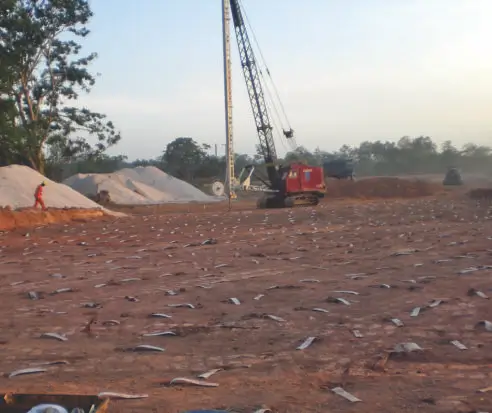By using fibro-chemical vertical drains, it is possible to quickly eliminate water from the soil, resulting in a significant reduction in the time required for the consolidation of compressible soils.
With the use of fibro-chemical vertical drains, it is possible to rapidly drain water from the soil, resulting in a significant reduction in the time required for the consolidation of compressible soils.
In practice, vertical drains are used in soft and low-permeability clayey soils, allowing for an increase in shear strength and, consequently, the bearing capacity.
The use of drains allows for most of the settlement to occur before the construction works, resulting in significant cost savings in maintenance, such as re-leveling and reconstruction of pavements, galleries, railways, highways, etc.
The consolidation process begins when the soil, under compression, filters the water contained between the pores of the solid particles, reducing its volume.
Consolidation is slower in less permeable soils.
The installation of vertical drains significantly reduces the distance that water needs to travel to exit the compressed area and reach a pressure-free permeable region, specifically within the drain columns.
With the use of drains, the flow of water within the clay is predominantly horizontal, whereas in the normal consolidation process, the flow is vertical.
The horizontal coefficient of permeability is significantly higher than the vertical coefficient of permeability, especially in the case of soft sedimentary clays, which gives the use of drains a significant additional advantage.
